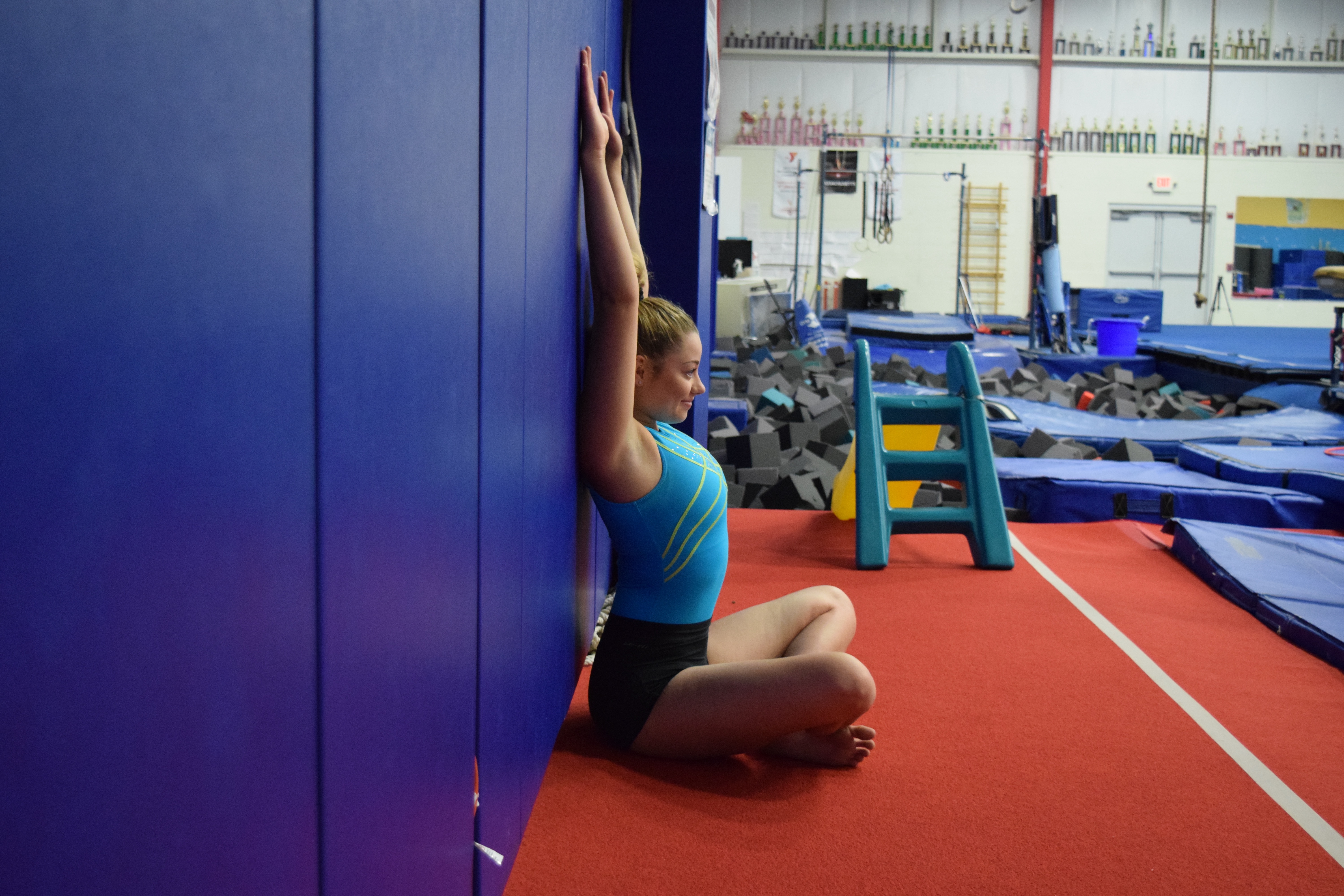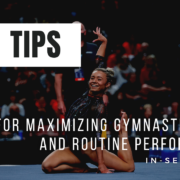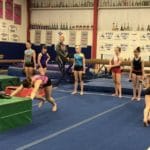Why I Have Gymnasts Track Sleep, Fatigue, and Soreness Every Day
Table of Contents
Click Below to Download Free Tracking Sheets
One of the most helpful things I have started doing with our gymnasts is basic daily tracking and monitoring. By this, I mean having our competitive gymnastics team journal some very simple aspects how they feel before each practice. Each of our gymnasts has an individual journal with all of their strength programs, educational handouts, and space for note-taking. What is also inside the journal is basic daily tracking sheets.
For the athletes, I think it is incredibly important to be in tune with how they feel and how outside gym (stress levels, sleep, homework, hydration, nutrition, etc) influences their inside gym training. For the coaching staff, it gives us insight into how they are responding to the training we put together and gives us a basic insight into how things are going.
Today, I wanted to briefly share are few things I have them track and why, so other facilities can try it out.
1. Hours of Sleep
The first thing I have everyone log is how many hours of sleep they got the night before. For one, its one of the most important aspects of recovery, allowing time for the body to heal, grow, to adapt from training. At first many of the gymnasts didn’t think too much of it, but now everyone makes the direct connection between how they feel, how training is going, and how much they are sleeping. 90% of the time, athletes realize how little they are sleeping and make a positive change to not feel so drained. It also many times fosters a really positive discussion on time management and electronic use before bed between athletes themselves, but also to the coaches.
2. Perceived Soreness (0 – 10 Scale)
For me, perceived soreness is more a measure of muscular fatigue that relates to the training the day before. Whether it results from training skills, routines, strength, or cardio, overall levels of soreness are really important. I describe this to athletes as physical soreness, with 0 being absolutely fine, and 10 being cripplingly sore. For one, it gives insight into how athletes responded to the last day or days of cumulative training. Secondarily, I think it also gives psychological insight into how a gymnast may approach the day of training ahead.
It’s inevitable that gymnasts will be sore from hard training, and in a way we want this to occur to make sure adaptation is being chased. Remember, the proper implementation of training can enhance performance and also be protective against injury as fitness develops. However, we need to keep a very close eye on too high of soreness levels, global fatigue sparking overtraining syndrome, and overuse injury risk escalating.
From being an athlete myself, coaching a lot of athletes, and seeing many gymnasts for medical-based rehab, this aspect can be really important to understanding whats going on.
3. Perceived Fatigue (0-10 Scale)
In parallel to soreness levels above, I also have gymnasts give a perceived rating of global fatigue. In my mind, this is less of a physical measure of soreness and more of a mental measure of how “drained” a gymnast feels. For me, the soreness levels reflect the actual training – recovery cycles. I feel the perceived fatigue factors in much more global stress levels. This can include school work, family life, friends, and other stressors that factor into the global stress response.
Together these numbers are really helpful for the athletes to reflect on, and coaches to understand. Often times I will tweak or individualize the daily assignment if someone is having a rough patch. On the same side, if the whole team is great or very fatigued I reflect back on the training to learn more. I may sometimes even adjust the training if everyone has a particular level of soreness or fatigue.
4. Resting Heart Rate
Resting Heart Rate is a slightly more involved marker for picking up overtraining syndrome or just general elevated stress levels. There is mixed research, but if someone has a true elevation of resting heart rate first thing in the morning and in a rested state before training, it might be something to look further into. It’s relatively simple, they just sit still for a few minutes then measure their heart rate for 1 minute before practice starts, then log it in their daily journal. For most of our athletes, it’s more just another tool I use to help them reflect on their training. For more advanced / older athletes, I have them do it first thing when they wake up in the morning and before practice.
In reality, there are much more involved markers to this such as Heart Rate Variability (HRV) or other things known as “internal markers” of training load. This is just what I have found the easiest for me to look into, and for the gymnasts to quickly do every day.
5. Bonus – Monthly Growth Tracking
This is more on a month to month basis, but I think that regularly tracking growth and development in youth athletes is critical. This is for all sports, but gymnastics even more so given its year-round demand and early sports specialization. If you want to read more and see a short video I made on how to track this, check out this blog post here (https://shiftmovementscience.com/how-to-growth-and-developmet-in-young-athletes/)
Academic Resources
For those more nerdy people like myself, there are a few really good resources that I would recommend checking into. I have learned a lot from reading more on this material, and enjoy keeping up to date as technology evolves. Personally, I’m looking into trying to measure Rate of Perceived Exertion following training sessions, aligning it with objective workloads, and seeing if I can build of Tim Gabbett’s great research (find articles here and here) and apply it in gymnastics.
These books dive way more into internal and external training load monitoring, stress physiology, and adaptation principles. For more, check out these books
- Monitoring Training and Performance in Athletes – McGuigan (click for Amazon link)
- Strength and Conditioning for Youth Athletes – Lloyd and Oliver (click for Amazon link)
- Advanced Strength and Conditioning: An Evidenced-Based Approach – Turner and Comfort
My advice is to just start with the simple basics. Make up some basic tracking sheets, then teach the athletes to start with hours of sleep, perceived soreness, perceived fatigue, and resting heart rate.
Want to Learn More?
If you enjoy this type of content and want to learn more from SHIFT, be sure to download my new Gymnastics PreHab Guide, that walks through all of these ideas along with soft tissue care, additional strength work, and more. The sign up can be found right here,
Download SHIFT's Free Gymnastics Pre-Hab Guide
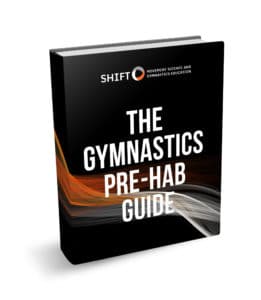
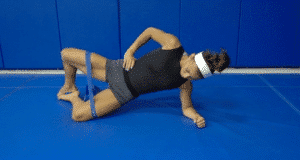
Daily soft tissue and activation exercises
Specific 2x/week Circuits for Male and Female Gymnasts
Descriptions, Exercise Videos, and Downloadable Checklists

For now, I hope this helps! Have a great week,
Dave Tilley DPT, SCS, CSCS


